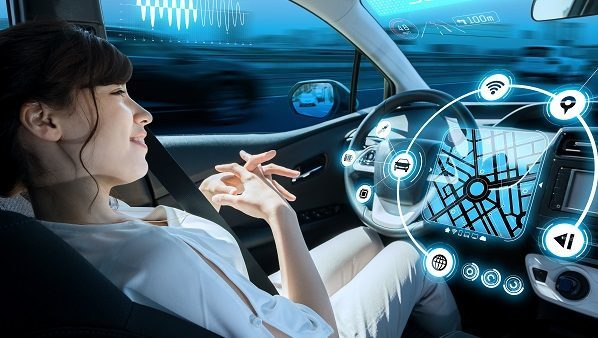
In the early 2020s, vehicles with fully automated capabilities will be on Canada’s roads.
Ryan Stein
In July 2018 the CIA featured a popular article by Ryan Stein, who worked with the Insurance Bureau of Canada at the time, discussing the sweeping change automated vehicles would have on consumer habits and insurance laws.
Two years later, the future of autonomous vehicles is here. We sat down with Alex Liu, ACIA and Senior Actuarial Analyst at Economical Insurance, for a follow-up discussion on the CIA’s Seeing Beyond Risk podcast (episode 48).
Much like Stein’s article, Liu’s interview offers an up-to-date look at the industry’s efforts to meet the demands of innovative technologies surpassing the speed of everyday change.
Five levels of autonomy
“‘Autonomous vehicle’ is a broad term that can be broken down into five levels of autonomy,” explains Liu. “Going from level 0, which is no automation, to level 5, which is full automation; the vehicle makes more driving decisions requiring less human intervention.”
Current models on today’s roads are manufactured between levels 1–3 and while levels 4–5 represent a huge technological leap, Liu believes, they could be part of our future in as little as 5–10 years. But how much does this advancement disrupt auto insurance markets?
Two sides to every story
“Accident claims would be lower,” says Liu. “But there are two sides to the story: frequency and severity.” What both Liu and Stein caution is that while there will be a decrease in the number of accidents caused by human error, the severity of vehicle claims is likely to go up as the cost of technology repair will be high.
Another disruption concern is the shift from consumer to manufacturer liability. As vehicles take on more autonomous driving decisions, personal auto insurance faces the threat of demise. However, insurers are not without recourse. With manufacturers bearing more responsibility, this presents the chance for new market opportunities on the product liability side. At the same time, Liu encourages, there would still be ample demand for coverage on vandalism, weather-related damage, animal collisions, etc.
Insurers can also expect to see the demand for cyber risk insurance surge. Autonomous vehicles are inherently susceptible to hacking and privacy breaches, putting developers and core manufacturers at risk. Cyber risk insurance is an effective way to limit exposure to these risks while also ensuring consumer safety.
Data
As insurance moves from a personal to vehicle-centric framework, rating variables (gender, age) will become less relevant. Instead, the make and model of the vehicle will have more predictive power; reminding us once again why data is king.
Predicting loss potentials at the onset will come down to judgement, but as data increases in quantity and complexity it will require the use of more advanced techniques for analysis. At this moment, credibility is the chief concern as actuaries and insurers grapple to stay abreast of a fast-moving change.
For Liu the takeaway is simple: “Automated vehicles are reshaping the insurance industry – the most important thing actuaries can do is embrace it and act quickly.”
This article originally appeared in the CIA (e)Bulletin.





